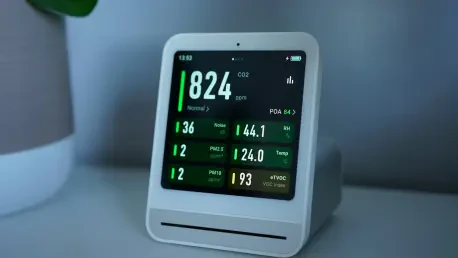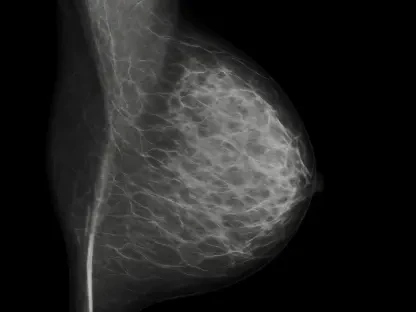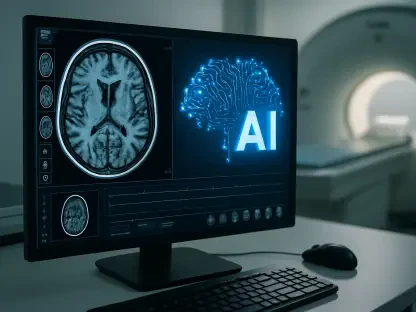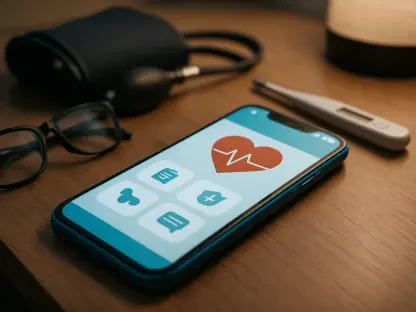The healthcare landscape has been undergoing a rapid transformation, driven largely by the increasing integration of advanced technologies. Patient monitoring devices stand at the forefront of this evolution, promising significant changes in how healthcare is delivered, assessed, and improved. As these devices become more sophisticated, they provide critical real-time data on various health parameters, helping medical professionals make informed decisions. This data-driven approach not only enhances the quality of healthcare but also empowers patients to take charge of their health, offering a proactive solution to potential health challenges. As new technologies continue to shape the patient monitoring device market, these instruments play a critical role in evolving healthcare practices. They are becoming indispensable across various medical settings worldwide, promising enhanced outcomes, streamlined processes, and cost containment.
The Growing Market and Its Impetus
The patient monitoring device market is experiencing robust growth, with predictions indicating a compound annual growth rate (CAGR) of about 8% by 2028. This growth is primarily driven by the increasing incidence of chronic diseases such as diabetes, heart disorders, and respiratory issues. With an aging global population, healthcare systems face the challenge of providing efficient care while managing rising costs. Patient monitoring devices offer a solution by enabling continuous observation, reducing the need for hospital admissions, and improving disease management. Furthermore, the advancements in remote patient monitoring (RPM) technologies have expanded healthcare capabilities beyond traditional hospital boundaries. Patients can now be monitored from the comfort of their homes, receiving personalized care without the constraints of geography. This trend not only increases patient convenience but also reduces the burden on healthcare facilities.
Technological progress in this field is undeniable. Enhanced device efficiency and usability are contributing factors to their widespread adoption. In recent years, there have been significant improvements in device accuracy, data connectivity, and user interface, making these devices more appealing to consumers and healthcare providers alike. The integration of artificial intelligence and machine learning into these systems allows for more advanced data analysis, enabling healthcare professionals to detect health anomalies more swiftly. As technology continues to evolve, patient monitoring devices will likely become even more integral to healthcare delivery. The focus is not just on tracking vital signs but also on enabling comprehensive health monitoring, potentially leading to earlier diagnosis and intervention.
Varied Applications and Device Categories
Patient monitoring devices are versatile tools, utilized across diverse healthcare settings such as hospitals, clinics, and even residential environments. Each category of devices serves specific medical needs, helping professionals track different health parameters critical for effective treatment and management. Hemodynamic monitoring devices, for instance, play a vital role in measuring blood circulation dynamics. They are used extensively in critical care to track cardiac output and blood pressure, offering insights into a patient’s circulatory health. These measurements are paramount for diagnosing and treating conditions related to heart function and fluid balance, making hemodynamic monitors indispensable during surgeries and in intensive care units.
In contrast, neuromonitoring devices are crafted to ensure the health of the nervous system during complicated medical procedures. They monitor neural responses and brain activity, helping physicians mitigate risks associated with surgeries or recoveries. Cardiac monitoring devices form another critical category, focusing on capturing and analyzing heart activities. Their use is pivotal for managing cardiac conditions, allowing timely interventions that can save lives in emergency situations. Multi-parameter monitors offer a comprehensive view of a patient’s health by tracking several physiological measures such as temperature, heart rate, and oxygen saturation simultaneously. This holistic monitoring aids in forming a complete patient profile, crucial for complex medical evaluations and interventions.
Non-Hospital Settings and Their Evolution
The use of patient monitoring devices has grown significantly outside traditional hospital environments. Patients, especially those requiring regular health checks or managing chronic conditions, benefit from the convenience and efficacy of these technologies within home settings or long-term care facilities. This shift not only helps in maintaining patient comfort but also plays a crucial role in reducing healthcare costs by minimizing the need for hospital admissions or frequent clinic visits. Enhanced communication tools integrated with these devices allow healthcare providers to remain updated on a patient’s status, fostering improved medical decision-making and promptly addressing potential health issues.
Remote patient monitoring technologies are on the rise, driven by an increasing demand for more accessible healthcare solutions. Such devices allow for real-time tracking of vital signs, alerting both patients and professionals to any abnormalities. This capability is instrumental in improving patient outcomes by ensuring timely interventions while also promoting patient engagement in their health management. With the expansion of these technologies into telehealth platforms, communication between patients and healthcare providers has become more fluid, promoting a more proactive approach to health management.
Advancements in Technology
Recent technological advancements have greatly influenced the patient monitoring device market, pushing the boundaries of traditional healthcare. The emergence of wearables, artificial intelligence, and mobile health applications has introduced a new era of personalized and real-time medical monitoring. Wearables, equipped with advanced sensors, enable continuous tracking of vital signs without intruding on daily life, ensuring that users maintain a steady check on their health status. Telemonitoring technology has also broadened the possibilities of remote healthcare, providing timely insights and facilitating early medical intervention. By capturing data remotely, healthcare providers can offer better guidance, minimize physical consultations, and ultimately reduce healthcare costs.
AI and machine learning further enhance healthcare by aiding in sophisticated data analysis, enabling pattern detection that might be missed with traditional methods. These technologies are transforming how patient data is interpreted, enhancing decision-making processes for more precise diagnoses and targeted treatments. Mobile health solutions and applications are making strides as well, providing tools for self-monitoring and communication between patients and providers. This rise in digital health tools is empowering individuals to take preventative measures and manage chronic conditions efficiently from any location, making healthcare more inclusive and dynamic.
Overcoming Challenges and Constraints
Despite the positive outlook for the patient monitoring device market, it faces several challenges, primarily related to regulatory requirements and data management complexities. Navigating the complex regulatory landscape is essential for bringing new products to market. Stringent regulations ensure device safety and efficacy, but they also pose significant hurdles in terms of development timelines and costs. Companies must remain agile to meet these evolving standards, balancing innovation with compliance. Furthermore, the large amounts of data generated by these devices necessitate robust management strategies to ensure secure collection, storage, and analysis. Protecting patient privacy while enabling effective data use continues to be a pressing concern in this sector.
As the market grows, companies must also adapt to the pressure of remaining competitive. Innovations in technology must be met with strategic approaches, including collaborations and acquisitions, to blend strengths and accelerate development. Effective marketing and patient education are vital components in fostering device adoption, bridging the gap between technological capability and user acceptance. By overcoming these challenges, patient monitoring device manufacturers can enhance their growth prospects and contribute significantly to the advancement of healthcare. As they navigate these hurdles, companies must emphasize reliability, accuracy, and patient safety to maintain their standing within this evolving industry.
Geographic Distribution and Market Competition
The distribution and adoption of patient monitoring devices vary across different geographic regions. In particular, North America holds a dominant position in this sector, driven by a high prevalence of chronic diseases, technical advancement, and a substantial demand for wireless monitoring systems. The region’s well-established healthcare infrastructure and increasing consumer awareness contribute significantly to its leading position in the market. Conversely, the Asia-Pacific region is witnessing rapid growth, attributed to its large geriatric population, rising chronic conditions, and swift adoption of cutting-edge technologies. Developing healthcare infrastructure and increasing investments form the backbone of the region’s progress, positioning it as a focal point for future market expansion.
The competitive landscape within the patient monitoring device market is characterized by the presence of notable players including Abbott Laboratories, Medtronic, and GE Healthcare. These companies engage in various growth strategies such as mergers, acquisitions, and product launches to solidify their market presence. For example, GE Healthcare’s introduction of the CARESCAPE Canvas monitoring platform illustrates continuous innovation in this field, highlighting a commitment to meeting the evolving needs of healthcare providers and patients alike. It is through these strategic endeavors that companies maintain their edge, fostering advancements that lead to breakthrough innovations in patient monitoring technology.
Strategies for Market Growth
Achieving sustained growth in the patient monitoring device market requires companies to implement a blend of strategic initiatives aimed at capturing emerging opportunities and addressing competitive pressures. Notably, launching innovative products and fostering collaborations emerge as pivotal tactics for gaining an edge in this expanding landscape. Continuous research and development efforts fuel the introduction of advanced devices that meet modern healthcare demands, offering solutions that are both practical and responsive to patient needs. By aligning product offerings with industry trends, companies position themselves to capitalize on the increasing demand for personalized and efficient healthcare solutions.
Acquiring complementary businesses is another growth strategy that companies utilize to enhance their capabilities and market reach. Collaborations and partnerships with industry peers, academic institutions, or tech firms can lead to shared resources and expertise, driving innovation and accelerating product development processes. Additionally, these strategies allow for a more integrated approach to addressing diverse consumer demands, fostering sustainable growth in an intensely competitive market. By focusing on patient outcomes, cost efficiency, and embracing technological advances, industry players are poised to lead the charge in revolutionizing healthcare delivery. These efforts underline a collective ambition to enhance patient care and well-being through sophisticated monitoring technology.
Navigating the Future
The market for patient monitoring devices is seeing significant growth, with forecasts suggesting a compound annual growth rate (CAGR) of approximately 8% by 2028. This surge is largely due to the rising prevalence of chronic illnesses such as diabetes, cardiovascular diseases, and respiratory conditions. As the global population ages, healthcare systems worldwide are grappling with the demand for efficient care alongside escalating costs. Patient monitoring devices provide a solution by facilitating continuous observation, which reduces the necessity for frequent hospital admissions and enhances disease management.
The field of remote patient monitoring (RPM) has revolutionized healthcare by extending care beyond traditional hospital settings. Patients can now benefit from being monitored at home, allowing them to receive personalized care irrespective of their location. This development not only improves patient convenience but also alleviates pressure on healthcare institutions. Technological advancements are pivotal in this sector, with improvements in device accuracy, connectivity, and user-friendliness driving widespread adoption. Enhancements in artificial intelligence and machine learning allow more refined data analysis, enabling healthcare professionals to identify potential health issues more quickly. As technology progresses, patient monitoring devices are poised to become even more integral to healthcare, focusing not only on vital signs but fostering comprehensive health monitoring for early diagnosis and timely intervention.









